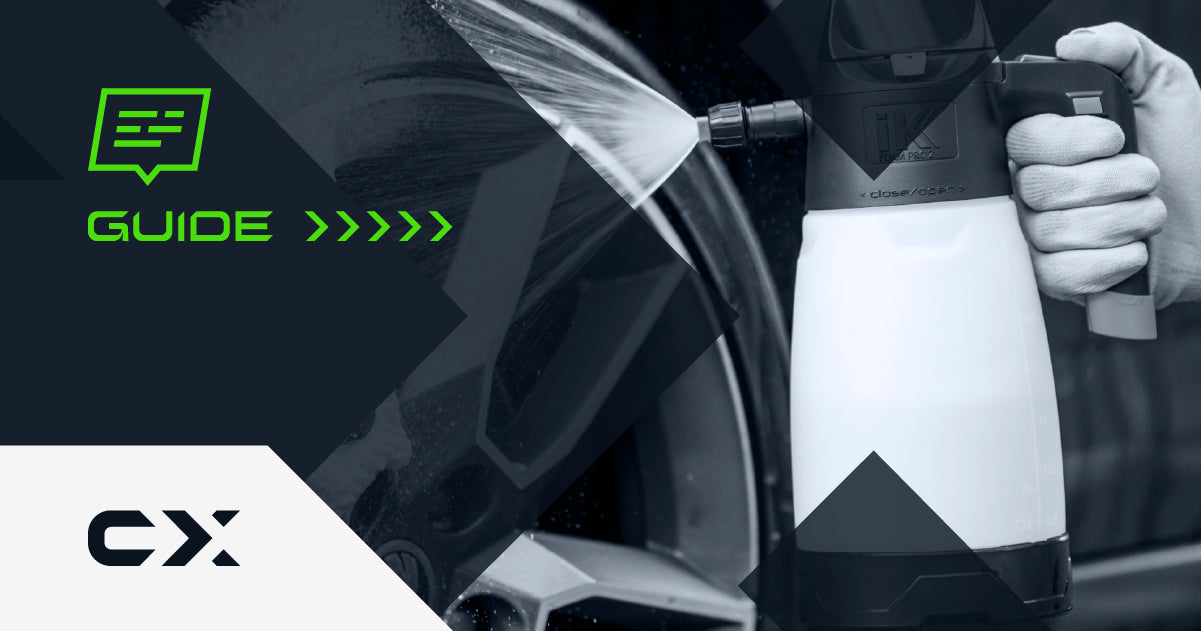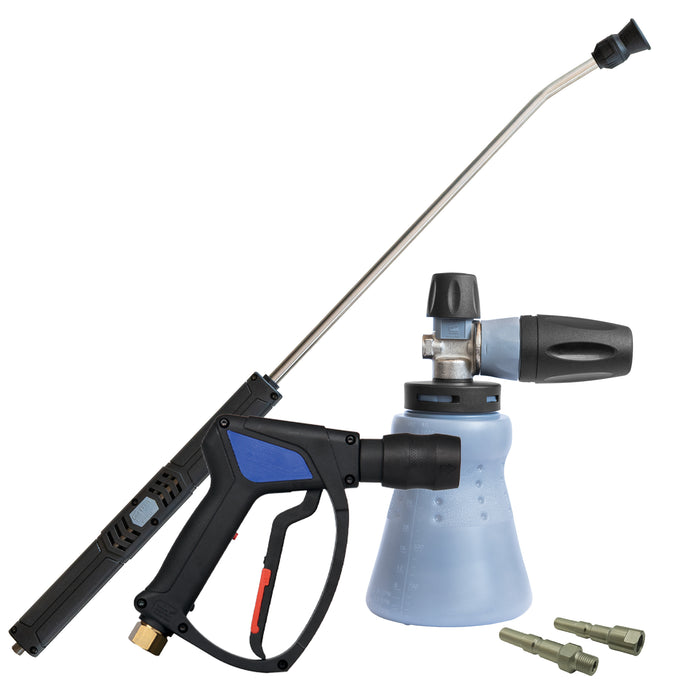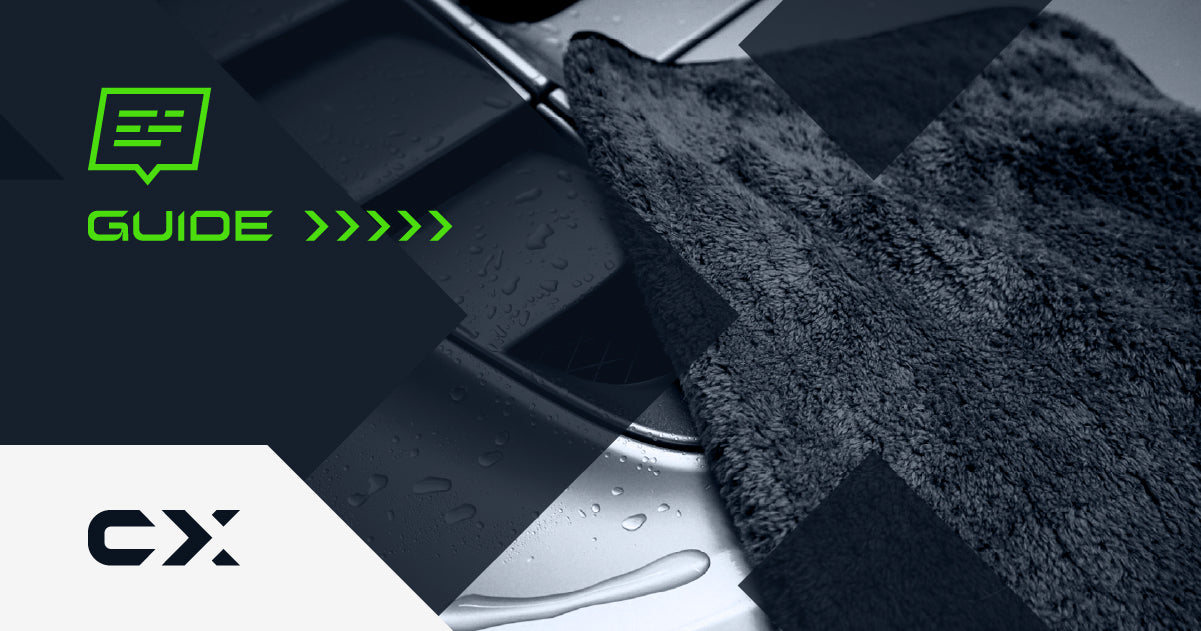When it comes to detailing, products are not always used pure, but rather diluted with water. Dilution is essential to achieve a perfect result, for example, you can “adjust” the strength of a detergent based on the delicacy of the surface and the amount of dirt present or reduce the shine of a dressing.
At first glance, dilution may seem extremely complicated, however once you understand the technique it turns out to be a very simple operation.
It is important to keep in mind that in a dilution ratio the first number refers to the product, the second refers to the “parts” of water used to dilute the product. The term “ parts ” allows you to calculate any dilution ratio in a simple way.
Let's take a practical example: if we want to dilute a detergent with a ratio of 1:4 we must interpret the ratio as 1 part detergent and 4 parts water.
It is also of fundamental importance to know the capacity of the container since it is one of the useful elements in determining the quantity of product necessary for dilution.
The formula to calculate the dilution is very simple, here is a practical example:
Let's take our detergent again with a 1:4 ratio, while the container we will use for the dilution is 500ml.
At this point you will do:
the sum of the two dilution ratios 1+4=5
divide the ml of the container by the total obtained from the previous sum 500/5 = 100 ml
So, 100ml will be the amount of detergent to use in a 500ml container.
/// DILUTION IN FOAM LANCE
This is different from diluting a product in a bottle or spray bottle.
In fact, the dilution ratio found on the label of the product you have chosen to use is never the ratio that must be diluted inside the Foam Lance tank, but rather it is the dilution coming out of the Foam Lance and that must end up directly on the vehicle . This happens because the quantity of water that passes through the Foam tank and that becomes foam is less than the quantity of water that passes through the pressure washer.
Dilution is very delicate since the Foam is subjected to various variables, such as:
- Product density: a dense product has a harder time rising in the Foam lance
- Foam Lance Setting
- Pressure Washer Performance: In Terms of Water Flow and Pressure
- Fluid temperature
- And more
However, these variables have a relatively small impact on the success of the dilution.
/// HOW TO CALCULATE THE DILUTION IN THE FOAM LANCE
Before moving on to the operations that will need to be performed to calculate the correct dilution, it is necessary to talk about PIR . The acronym stands for “ Panel Impact Ratio ”, or, as we said before, the dilution that will end up directly on the vehicle. The PIR can be expressed on the product label in three different ways:
- Dilution Ratio , e.g. 1:25
- Division of the ratio , eg: 0.04
- Percentage , eg: 4%
To understand how to calculate the dilution we will use the ratio 1:100 as an example.
The first thing to do for successful dilution is to adjust the valve on the Foam lance by turning it all the way to minus, in this way you will control the proportion (little product and a lot of air).
After that, it will be necessary to understand how much water is taken from the Foam lance tank and how much water from the pressure washer. To understand this, just do a simple test :
we fill the tank of our Foam lance with 100 ml of water (in this step it is necessary to be very precise). We then take a bucket with a capacity of 10/20L and weigh it empty.
Once these two steps have been completed, we begin to deliver water into the empty tank with the Foam lance connected to the pressure washer until the 100ml (which simulate our cleaning product) in the tank are finished.
At this point we weigh the tank and from the result we subtract the initial weight of the empty tank and the 100ml, in this way we will have as a result the quantity of water that comes from the pressure washer.
Let's say the total result of the water in the tank is 1.6 liters. To simplify the operation, we multiply everything by 10. The 100ml becomes 0.1 L and 1.6 becomes 16.
Let's subtract from the total sum our litre of water (which we remember simulates the product) of the Foam lance tank: 16-1 = 15
At this point the ratio will be 1:15, with 1L being taken from the Foam Lance, 15L from the pressure washer.
How do we relate the new ratio to the PIR found on the label?
We multiply the PIR expressed in decimals by the number of litres coming from the pressure washer.
1:15 is 15 x 0.01 = 0.150L = 150ml
At this point we have understood that we will need 150 ml of product to dilute in the water.






